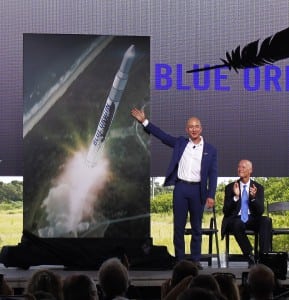
NATIONAL HARBOR, Md.--Blue Origin is currently testing its powerpack for the BE-4 engine and is on path for full engine testing by the end of 2016, a company executive said here Wednesday.Blue Origin Director for Strategy and Business Development Bretton Alexander said the company is testing the subscale of the engine and has already tested full scale injectors and multiple injector elements. Blue Origin, he said, has tested all of the BE-4 pumps, valves and components. Presentation slides shown during…













